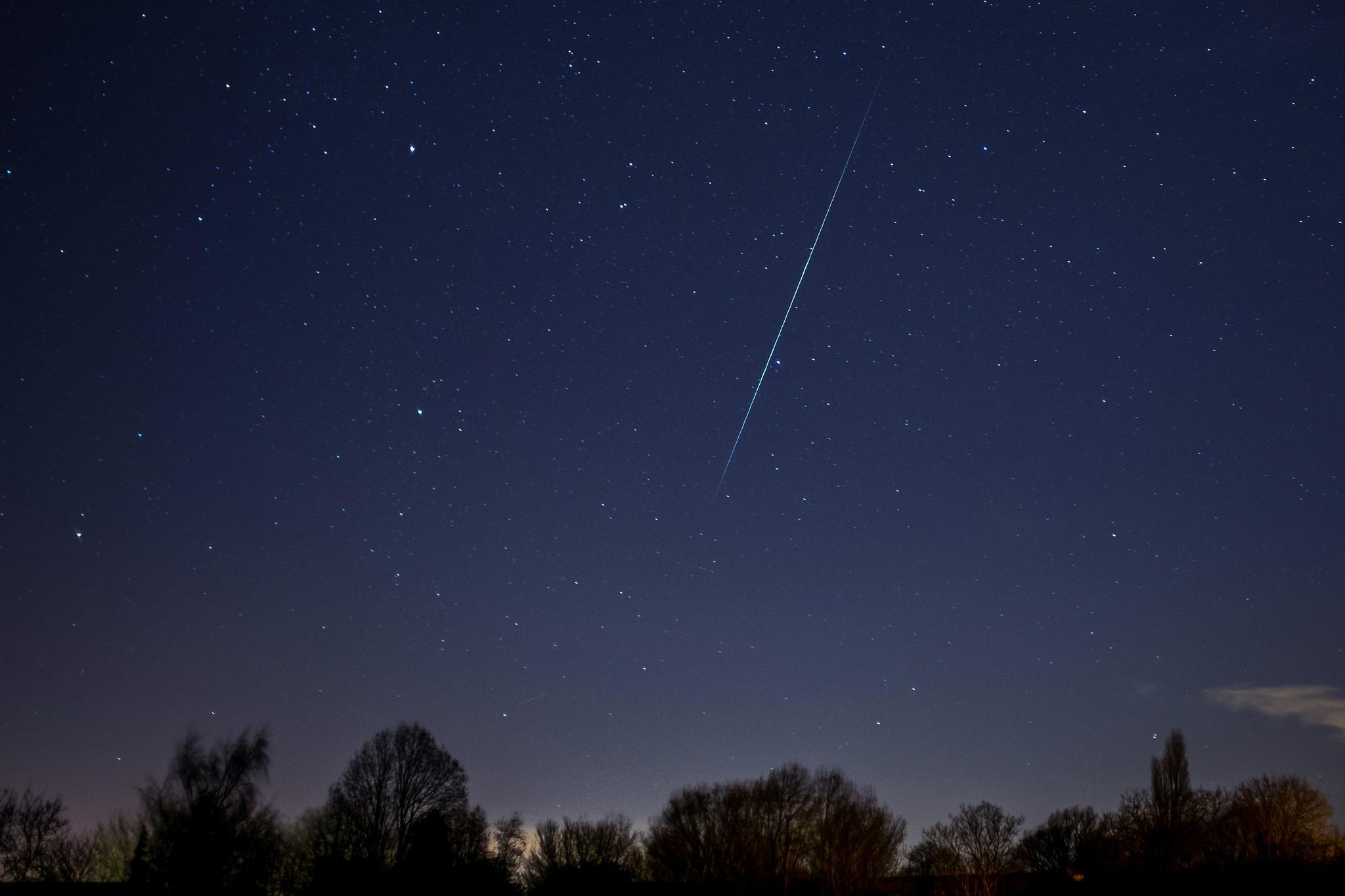
A meteor from the 2017 Geminids meteor shower. Photo by Brian Tomlinson/Flickr
Night sky puts on a show
Skywatchers are in for a treat this week as the Geminid meteor shower peaks. According to Texas State University Professor Don Olson, the Geminids will peak the night of Dec. 13-14.
“In the current era, the most reliable meteor showers are the Perseids of August and the Geminids of December,” Olson said in an email interview. “If skies are clear and bright moonlight does not interfere, observers are almost certain to see meteors near Aug. 12 for the Perseids or near Dec. 13 for the Geminids.”
That reliability has made the Perseids and Geminids two of the more popular meteor showers. Last month, the Leonids — another fairly well-known meteor shower — lit up the sky. Olson said the Leonid meteor shower occurs when Earth encounters debris from a particular comet — something that happens about every 33 years.
“The Leonids are best known for the possibility of meteor storms, which have occurred in the past at approximately 33-year intervals, with some gaps,” Olson said.
In the middle of this year’s Leonid shower, Central Texans observed a fireball – a bright meteor traveling through the sky. Those who didn’t actually see it might have heard or felt the sonic boom it created. However, Olson said, the fireball likely was not part of the Leonid shower. The Leonids are so named because they appear to emanate from the constellation Leo, which was below the horizon at the time of the fireball.
“This fireball may have been part of an annual autumn shower called the Taurids,” Olson said. “At the time of the spectacular event, the constellation Taurus was low in the eastern sky, exactly in the correct position to produce a bright fireball passing over central Texas from east to west.”
Olson said the Taurid shower is known for producing fireballs, some of which have been as bright as the moon.
Olson said that observations of the November fireball can be found at the American Meteor Society’s website. The site also uses an arrow to show the east-to-west track of the fireball.
EarthSky reports that the Geminids can best be seen around 2 a.m., when the constellation Gemini is high in the sky. More information on viewing the Geminids can be found on Earth Sky's website.











